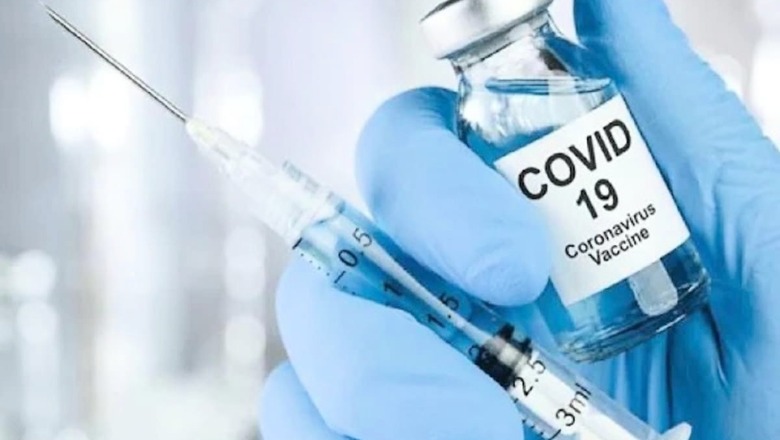
views
Single dose vaccination of at least 75 per cent of the population within a period of 30 days might reduce the mortality by 37 per cent in a district that is on the verge of another COVID-19 wave, a new study has said.
The modelling study conducted by the Indian Council of Medical Research (ICMR), published in the Lancet journal, has further stated that the vaccination of three-fourths of the population in a month can bring down symptomatic infections by 26 per cent in the district.
The test positivity rate crossing an example threshold value of 0.5 per cent during the gap of time between two waves of coronavirus in a region could help alert for the upcoming wave, the study stated, according to a Times of India report.
The study proposed using a strategy known as “rapid-response vaccination” in a hypothetical region as soon as the test positivity crossed the 0.5 percent threshold, in order to prevent the local resurgence of Covid-19 at the start of a new wave.
“As per this technique, we concentrated on a vaccination strategy that prioritises the widest possible coverage with single-dose vaccination, in which it takes one month to cover 75% of the population aged 18 years or above with a single dose. We found that such rapid and focused vaccination efforts alone could substantially reduce mortality by up to 37% in a district witnessing the beginning of another Covid wave,” the Times of India quoted Dr Samiran Panda, chief of the ICMR’s epidemiology and communicable diseases division.
According to Dr Panda, the appropriate test positivity rate thresholds for other districts in India could be determined, allowing for the use of fast vaccination tactics to reduce resurging infections at the onset of a new wave.
Further, methods such as mandatory mask wearing, restrictions on gatherings, and stay-at-home could minimise transmission by 25 per cent if combined with quick response vaccine.
“If these measures are implemented for one month in the district at the same time as the vaccination drive, the model projections suggest that overall deaths could be reduced by up to 45% for a Covid infection with reproduction rate of 2, and by 30% for that with a reproduction rate of 3,” he said.
The study also took into account practical assumptions on the effect of vaccination, such as the fact that people gain immunity in three weeks on average after being vaccinated. According to the study’s findings, while a single vaccination dosage could provide 60 per cent protection against severe sickness and death, the chance of contracting Covid still remains.
Here, the efficacy data of Oxford-AstraZeneca’s vaccine Covishield was taken as the basis, which according to published estimates provides 76 per cent protection from symptomatic infection after one dose.
Explaining how rapid vaccination protocol would help, Dr Panda said, “Clearing off trees in the path of a fast-raging forest fire will ensure that gradually, there would not be any trees for the fire to catch on to. It is like creating a fence to prevent the fire from progressing further. Similarly, when a district crosses its threshold test positivity rate indicating a resurgence in infections, vaccination in the surrounding districts with lower test positivity rate could be ramped up to prevent the infection catching on to them.” This is also to address the scarcity of vaccines and how to use them effectively during outbreaks.
Read all the Latest News, Breaking News and Coronavirus News here.




















Comments
0 comment